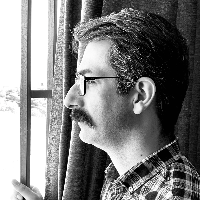Archetypal Critique of Iran Darroudi’s Paintings (Case Study: Adorned, Clear as Love, Prayer)
A suitable platform for paradigmatic criticism would be the paintings of Iran Darroudi, a contemporary Iranian female painter, which are created in the surrealist and symbolism style. For instance, paintings are one of the domains in which archetypes are manifested. Archetypes are abstract concepts that are common, repeated, and abstract in various human societies. They are rooted in the collective unconscious, the deeper part of the psyche, and are reflected in the individual’s consciousness and unconsciousness through fantasies, legends, dreams, delusions, and artworks in the form of symbols and myths, according to the perspective of analytical psychology.In fact, these symbols and mythologies are containers that convey archetypes, and by interpreting them, one can gain a deeper layer of the human psyche. In this research, we will examine the symbols of archetypes in three instances of Iran-Darroudi’s paintings to determine the role of the collective unconscious effect through the reflection of archetypes in Darroudi’s paintings. The purpose of this research is to develop a novel analytical method that employs a distinct approach to facilitate a more profound comprehension of the inner layers of Darroudi’s paintings. The research performed qualitatively on descriptive-analytical method. The collection of topics would be based on observation and the library. The findings indicate that the primary bold elements in Darroudi’s art are the manifested symbols of sky, earth, ruins, flowers, pearls, and light. These symbols represent the archetypes of mother/woman, sky/father, ascension, and marriage.
-
Evolution of Mimesis to Muhakat in Farabi's Philosophy
Maedeh Rahmani, *
Journal of Hekmat e Mo'aser, -
Reading Masoud Arabshahi's paintings from Derrida's views, focusing on the concept of parargon
Zeynab Nadri, Hosein Ardalani *, Babak Abbaasi
Wisdom and Philosophy,


